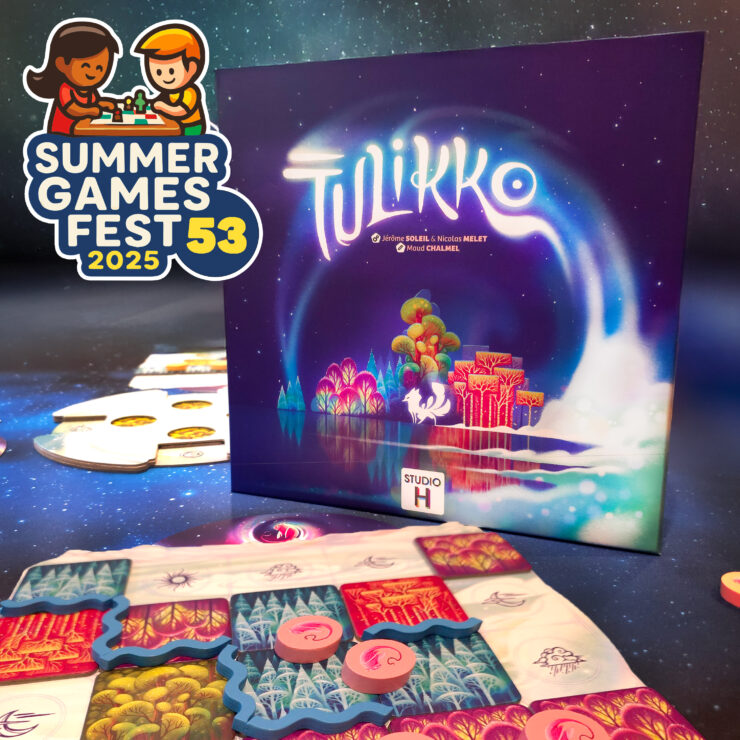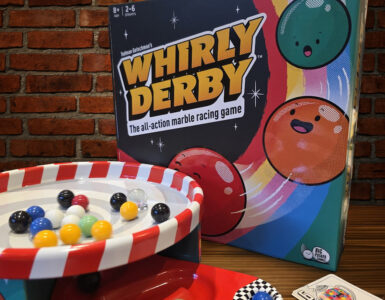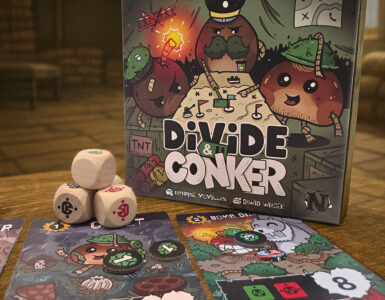Today we’re looking at Tulikko, a game that went from something I had never even heard of when it showed up on my doorstep a few weeks ago, to quite possibly my favourite game I’ve played all summer. Honestly, this game has got everything going for it — and it’s absolutely beautiful.
The idea behind Tulikko is that you play as mythical animal spirits living in the far northern forests. As spirits, you create the aurora borealis, but in exploring the forest you also uncover the secrets of other animal spirits. It’s a tile-laying game at heart, but with a clever mix of objectives and strategy.
Each player starts with a set of animal tokens and river tokens. The winner is either the first person to place all of their tokens, or the player with the fewest tokens left after 12 turns. And that 12-turn limit is key, games are short, snappy, and often leave you immediately wanting to set it up again to see if you can do better.
Setup is simple: you place the central board in the middle of the table and slide in five random tiles to form a cross, with one hidden face-down in the centre. Each player gets their own player board themed to their spirit, a shuffled pile of tiles, and their tokens. On top of that, there are objective cards that give you extra ways to ditch tokens, these might involve covering up a set of symbols, arranging certain colours in a pattern, or building specific river shapes. There are also aurora tiles, which give you handy bonuses when you manage to connect larger areas of forest.
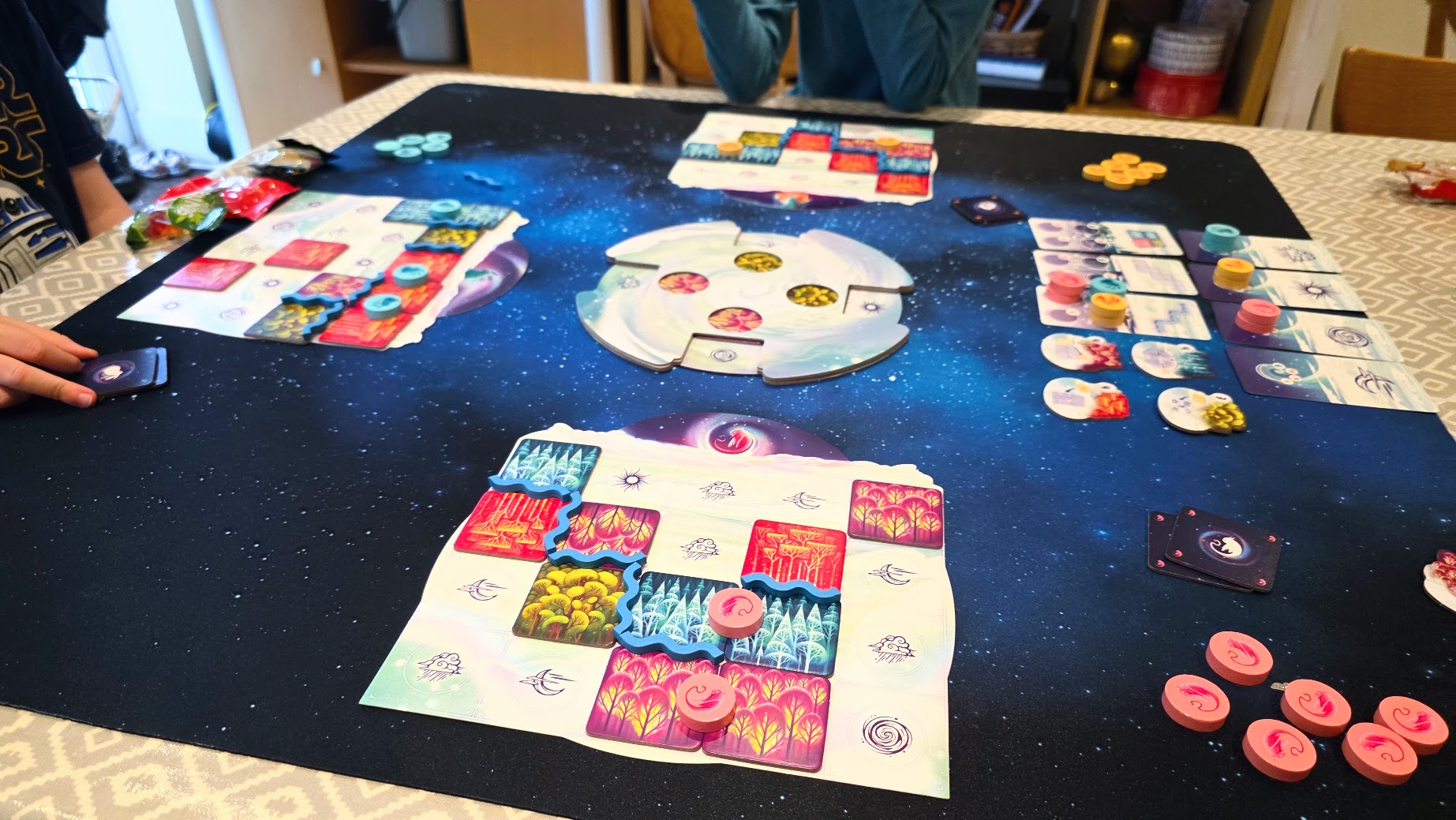
On your turn, you slide a tile from your personal draw pile into the shared central board. This pushes a tile out of the other side, and that pushed-out tile must then be placed on your own board on a matching symbol. This mechanic is really clever because it forces you to think ahead, you can’t always get tiles exactly where you want them, so you need to plan not only for yourself but also anticipate what your opponents are doing.
Tile placement then triggers actions: two adjacent forest tiles of the same colour let you place an animal token, while two different-coloured forests next to each other create a river and let you place a river token. Completing objectives lets you place even more tokens. Some objectives are shared, like covering symbols, and can only be completed by one player per game, while the larger landscape goals are open to everyone.
The game ends either when someone manages to place all of their tokens, or when the tiles run out after 12 turns. In our plays, sometimes we finished by someone clearing all their tokens, but just as often we ran out of tiles and scored by who had the fewest left. Animal tokens are worth 2 points, rivers are worth 1, so efficiency is everything.
The gameplay is quick, strategic, and surprisingly deep for something that’s so easy to learn. It’s got that “just one more game” feel, which is why the first time we played we rattled off three games back-to-back. The boys loved it, and as soon as Katie got home we insisted she join us for another round.
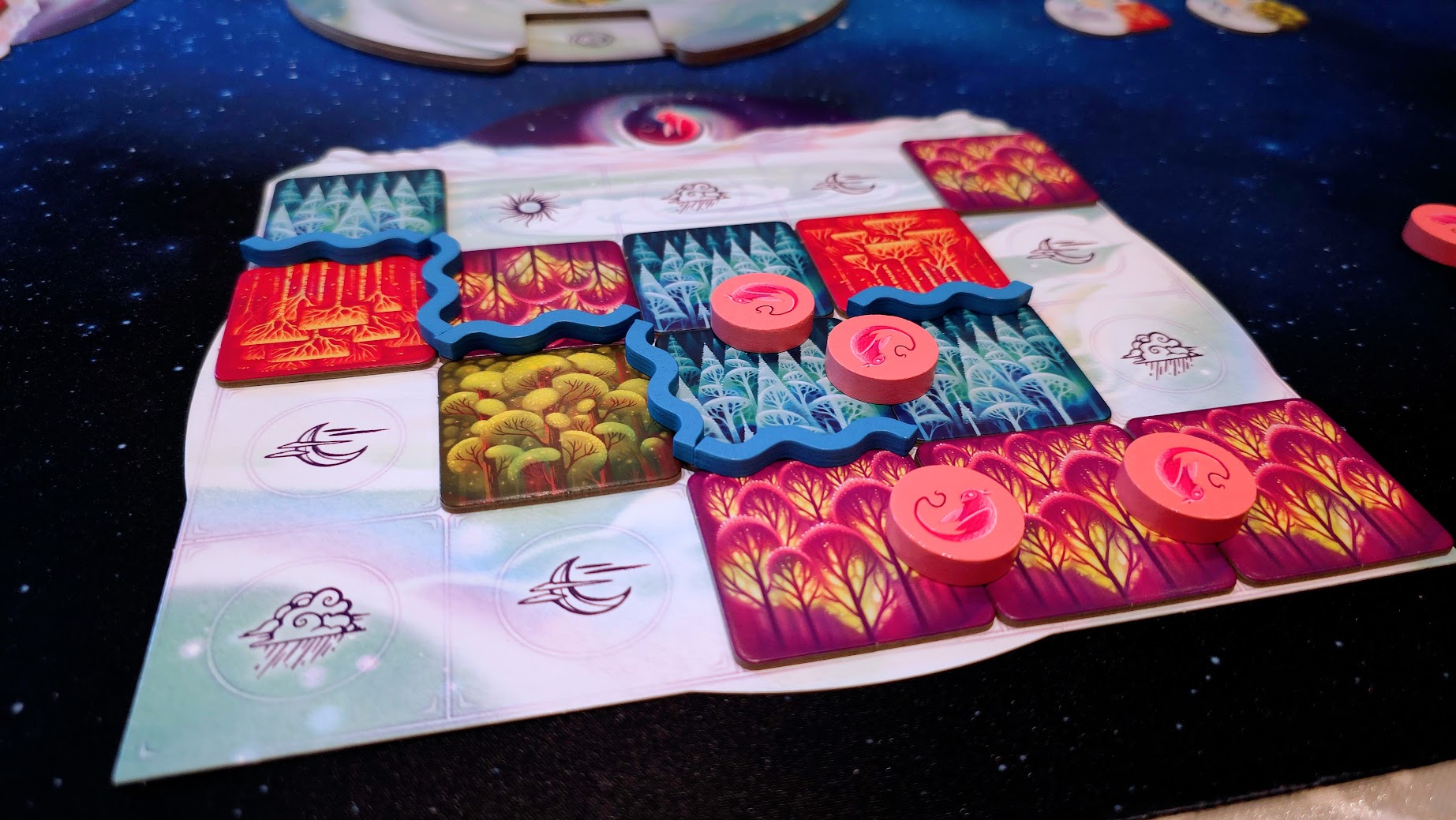
The production quality is top-notch. The artwork is gorgeous — evocative, colourful, and full of character. The tiles slide beautifully, the wooden tokens feel great, and the overall presentation is spot on. It’s the kind of game that looks as good as it plays.
I really didn’t know what to expect when Tulikko landed on my doorstep, but I was blown away by how much fun we had with it. It says 8+ on the box, but younger kids could definitely play along with a little help. Toby (7) actually won more games than anyone, and he still reminds me daily that he won the most games at the UK Games Expo this year.
We’ve played some excellent games this summer, but so far Tulikko might just be my favourite. It’s simple to understand, strategically deep, beautifully presented, and, for once, I genuinely don’t have a single negative thing to say. Outstanding stuff.
Disclaimer: Tulikko was kindly provided by “Hachette Games” for review. Flavien Loisier is the General Manager of Hachette and is an active member of our community. Our thoughts and opinions are, however, our own.


